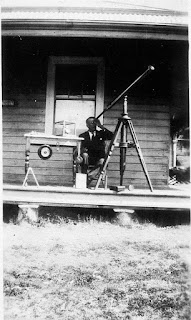In Australia we are fortunate to have
the wonderful website that is Trove.
Established by the National Library
of Australia, trove.nla.gov.au gives
access to a wealth of resources - across more than 90 million items - about
Australia and Australians.
Trove’s content comes from more than
1000 libraries around Australia as well as other cultural and educational
institutions and international collections with relevance to Australia.
Through Trove it is possible to search
across pictures, unpublished manuscripts, books, oral histories, music, videos,
research papers, diaries, letters, maps, archived websites and Australian
newspapers from 1803 to 1954.
I have made some great discoveries
through Trove. I found the sad Coroner’s
report into the accidental death of my grandmother’s older brother
From SMH 21 Jun 1887: CORONER'S INQUEST. The
City Coroner, Mr. H. Shiell, J.P., held an inquest yesterday, at the Children's
Hospital, Glebe Point, touching the death of a boy named Max Morgan, 6 years of
age, who died in the institution on Saturday last. From the evidence adduced,
it appeared that on the preceding Monday, while staying with some friends at
Summer Hill, the lad was, through his own negligence, run over by a cart, and
he suffered a fracture of one of his legs and other injuries. He was shortly
afterwards taken to the hospital, where he died on Saturday, tetanus having
supervened on the previous day. The jury returned a verdict of death from the
effects of injuries accidentally received.
I have also been able to read the
many accounts of the petty crimes of my great uncle Michael. A barman in his father’s hotel, he had
several arrests before the war for drunkenness, but after 1918, perhaps damaged
by his war experience, there were other transgressions – drunk and disorderly,
thefts of a bike and of small amounts of money (usually from other drunk
soldiers) and one instance of smashing a window.
There are joyful discoveries
too. In country newspapers, weddings are
described in minute detail. There are
lists of guests with descriptions of what they wore, with special attention to
the outfits worn by the bride and her attendants, and the mothers of the bride
and groom. If you’re lucky you get this
kind of detail (an account of the marriage of my great aunt, Violet White, in Lismore,
NSW,)
The Northern Star 28 November 1912
…The wedding cake, which was a work of art, was made and decorated by
the bride's mother. The usual toasts were proposed and honoured, and the young
couple were the recipients of hearty good wishes for the future from their
friends. On a side table was a fine display of presents, both useful and
ornamental. Among them was a silver sardine dish from the bridegroom's
employers, Maloney and Wilson, and cut glass and sliver pickle jars from his
fellow employees. Mr. and Mrs. Goldsmith left during the afternoon for their
home, the bride wearing a pretty costume of self coloured Flemish linen, revers
and cuffs of blue, with touches of black ; a white chip hat was trimmed with
lilies of the valley, Mrs. White, mother of the bride, wore black pailette,
trimmed silk fringe, black hat with ostrich feathers; Mrs. Robert McKenzie,
black satin, with coatee of Irish guipure : Mrs. C. McKenzie, royal blue chiffon
taffeta, trimmed ruchings, black hat with touches of emerald green ; Mrs. C.
Stanford, black silk, and hat to match. In the evening Mrs. White entertained a
number of young people, and a merry time was spent.
Funeral descriptions often list the
pall bearers, and who the wreaths came from which is all invaluable in piecing
together relationships.
Obituaries in country newspapers are
another source of family information, although it may not always be entirely
accurate. (I have lost count of the
number of old residents who died in the 19th century who claimed to
have been “the first white child born in ….”)
I learnt that my 2 x great
grandfather was a gardener, like his son:
The Northern Star 6 April 1898
A very old resident of the district, Mr. Charles White, sen., died on
Monday at the age of 72. Mr. White a few weeks ago seemed strong and hearty,
and as if he had many years of life before him, but a few days ago he had a
paralytic stroke, from which he never rallied, and died at the residence of his
granddaughter, Mrs. Kuskey, with whom he had been living for some time. Up till
a few years ago Mr. White carried on a market garden at South Lismore, and was
well known for the excellent produce he grew, which he generally exhibited at
the Spring Shows. His wife died three years ago, and soon after that event he
gave up the work of the garden. Messrs. Edward, John and Robert White, resident
in the district, are sons of his, and another son resides in Sydney. Mrs.
Robert McKenzie, of Lismore, is a daughter. The funeral took place yesterday,
and in the procession were some of his oldest district friends.
One of my happiest discoveries was
this one. It’s an account in The Northern Star of a birthday party. The birthday boy was Edwin Goldsmith, my
father’s first cousin, so it’s not surprising to me that one of the guests was
Miss M Gleeson, my father’s sister. The
real discovery was that the friend who presented the gift was my husband’s
father and that also present was Miss K Keogh, my future mother-in-law. My husband and I grew up in separate cities –
it was a surprise to find that our families had connections long before we were
born.




